Wooden houses are often thought to be short-lived, but this is a misconception. In fact, the world’s oldest wooden building, Japan’s Hōryū-ji pagoda, has a cypress structure that is over 1,300 years old. It was first built in 607 and reconstructed following a fire in 670. Researchers believe that there is at least one wooden house in Norway that dates back to 1170, while another in Switzerland was built in 1176. Additionally, many half-timbered houses based on a timber-rod structure are over 400 years old. There are plenty of reasons to consider using the material to a greater extent in new house design and construction.
Advantages of wood houses for the environment
Wood is an eco-friendly material that offers many benefits for construction. It has a lower net CO2 output than many other building materials, especially concrete, which is responsible for around 10% of all manmade carbon dioxide. This advantage only grows if the wood comes from sustainable and regional sources. Wood production requires less energy input, and trees absorb and store CO2 from the atmosphere as they grow. Wood homes are easier and faster to build than brick or concrete houses. Wood also has excellent insulating properties, which can improve the living environment in both summer and winter.
Furthermore, the pre-treatment and processing of wood make construction possible regardless of the weather. Houses can be erected even under damp and cold conditions, unlike those made of poured concrete or mortar, which take longer to set when it is cold or wet. Most mass timber, which is often used in construction, is fireproof, so there is no need to worry about fire hazards.
The circular economy of wood
Wood houses are more easily recycled than steel or concrete when they reach the end of their life. They can be broken down into individual parts, which can then be reused or recycled more efficiently, producing minimal waste. In contrast, the production of concrete requires considerable amounts of water, gravel, cement, and sand, which can only be reused as fillers and rubble after demolition. Wood is also aesthetically pleasing, as demonstrated by the following examples of impressive wood houses.
1. Saltviga
This wood house’s facade is made entirely of offcuts from the plank and parquet production of Danish manufacturer Dinesen. Not a single tree was felled for this project. The architects chose oak, a particularly durable hardwood that is well suited for facades, to create this masterpiece. They used 12,000 individual boards to complete the project.
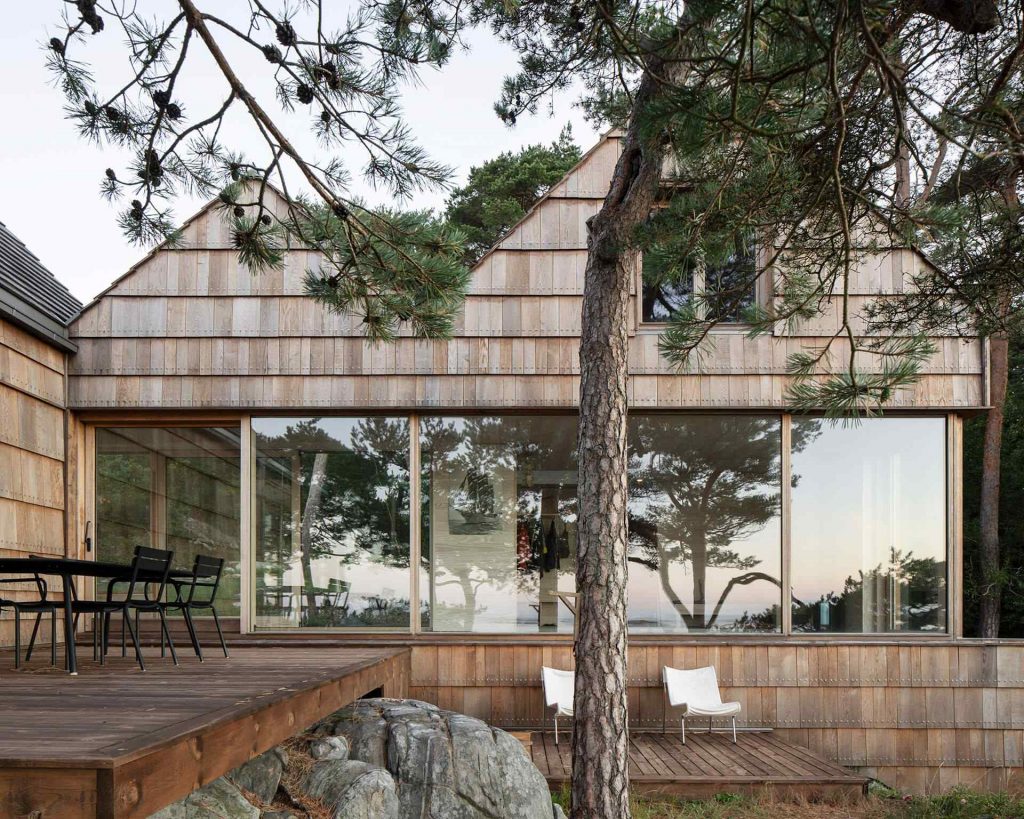
Photography: Johan Dehlin 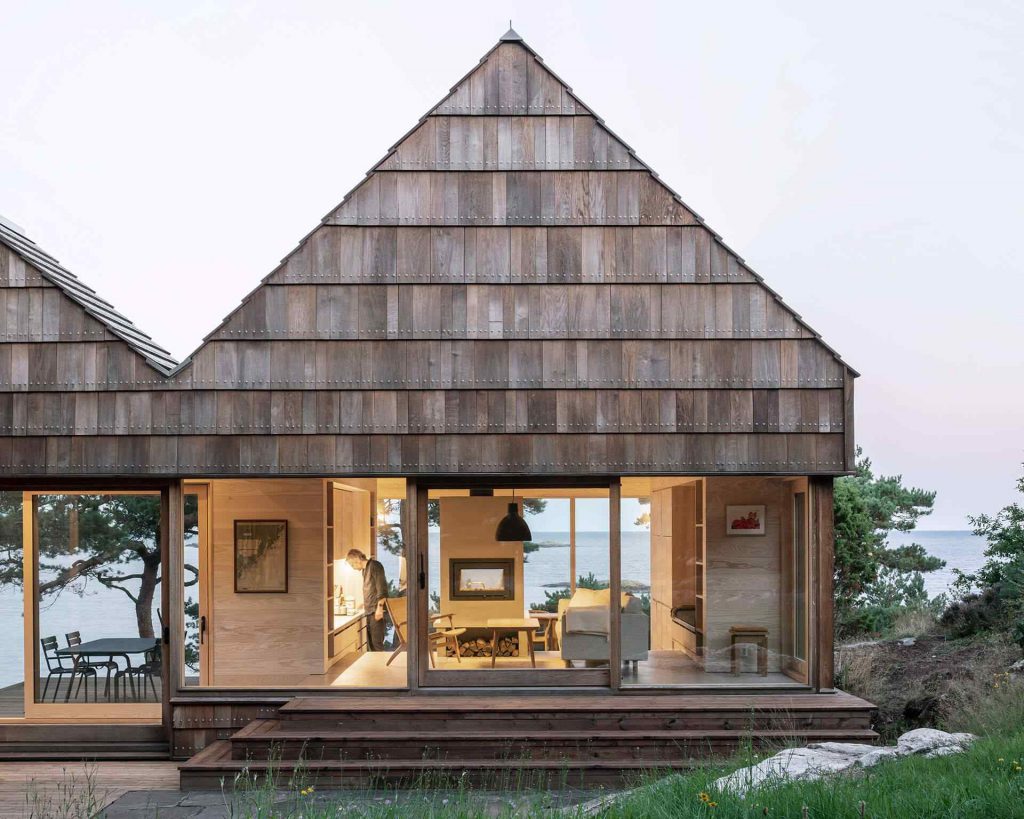
Photography: Johan Dehlin
2. Marketka house
The architectural firm creates designs that are both simple and playful, while staying true to their values of honesty and integrity. They believe that a space should not only be functional, but also visually appealing and inspiring. For instance, they opted for a 30-foot-high ceiling in one of their projects, which raised some eyebrows. When asked why they didn’t opt for more rooms instead, their answer was simple: it was the look they wanted. Sometimes, aesthetics are more important than maximizing square footage.
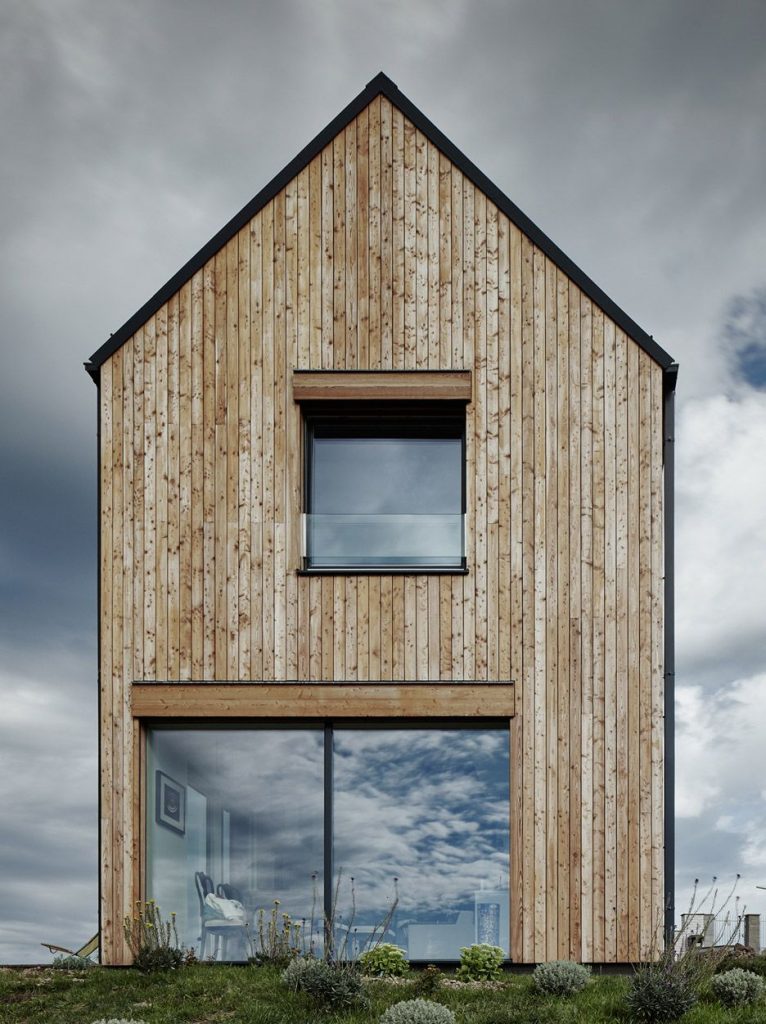
Photography: Boys Play Nice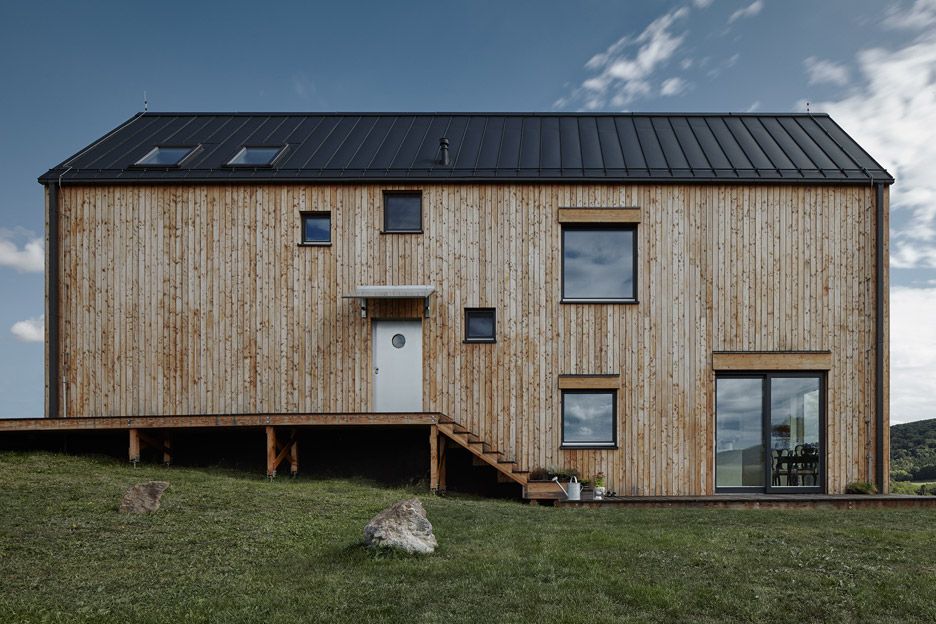
Photography: Boys Play Nice
3. Yaratam
In the Russian Republic of Tatarstan, a house designed by Yaratam architects stands out for its skillful reinterpretation of local vernacular architecture. The house is inspired by the region’s building traditions and continues the history of Tatar culture through its choice of materials and colors. The architect placed two structures of different heights on top of each other, which at first glance seem to collide. The house features clean lines and natural materials such as wood and French oak parquet throughout (except for the bathrooms).

Photography: Mikhail Loskutov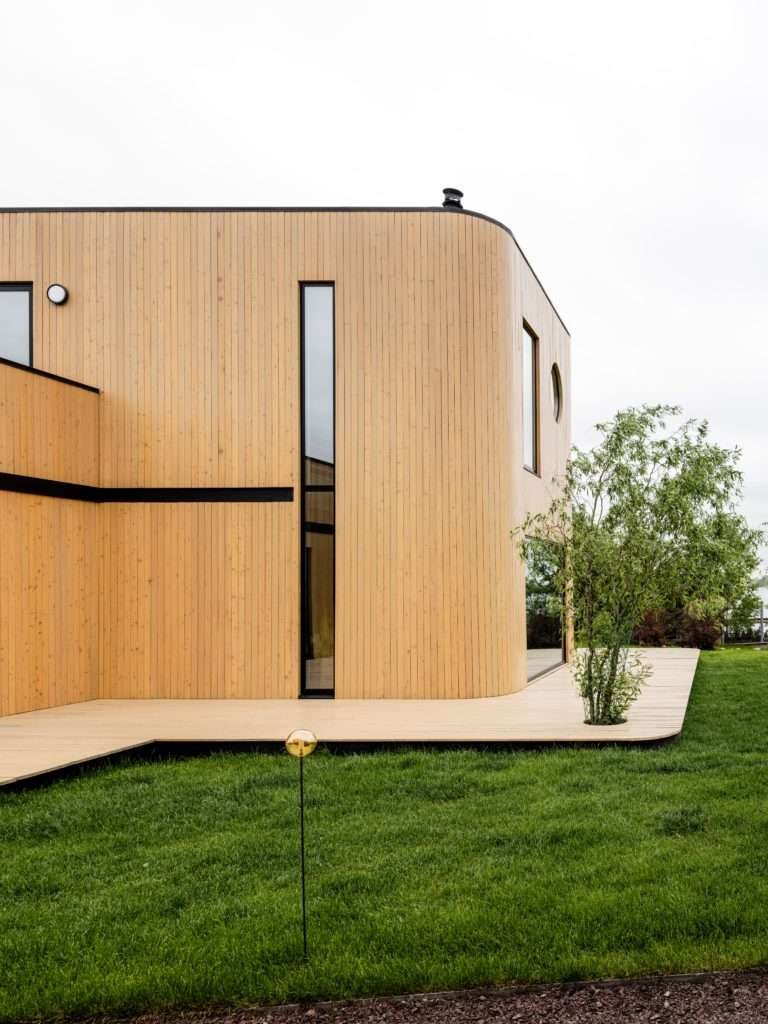
Photography: Mikhail Loskutov
4. Haus Köris
Haus Köris is a unique home in the Spreewald biosphere reserve southeast of Berlin. The house is constructed using prefab panels, which provide excellent insulation and require little heating. The green roofs also have an insulating effect and help the structure blend in with its surroundings. The patina of the house provides a special quality to the home.
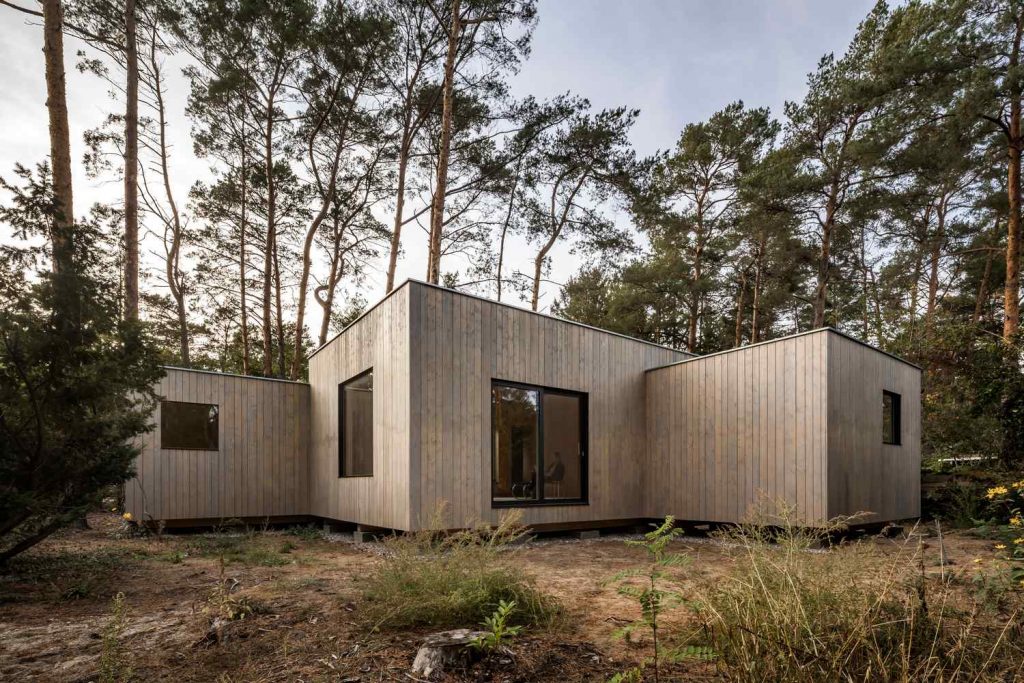
Photography: César Béjar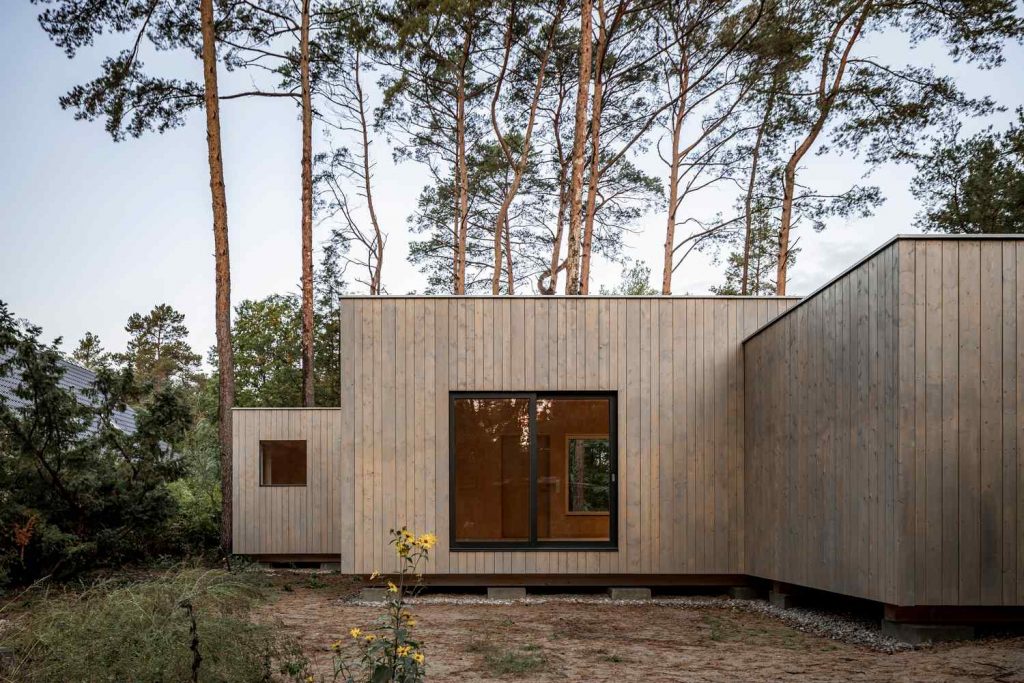
Photography: César Béjar
5. Résidence des Stagiaires
This unique wood house in Canada was built with tough ash wood and a tin roof to withstand the harsh weather of its location near the St. Lawrence River. The house features two parallel offset bodies that blend sublimely into the green surroundings and bring a subtle Scandinavian-inspired look to the area.
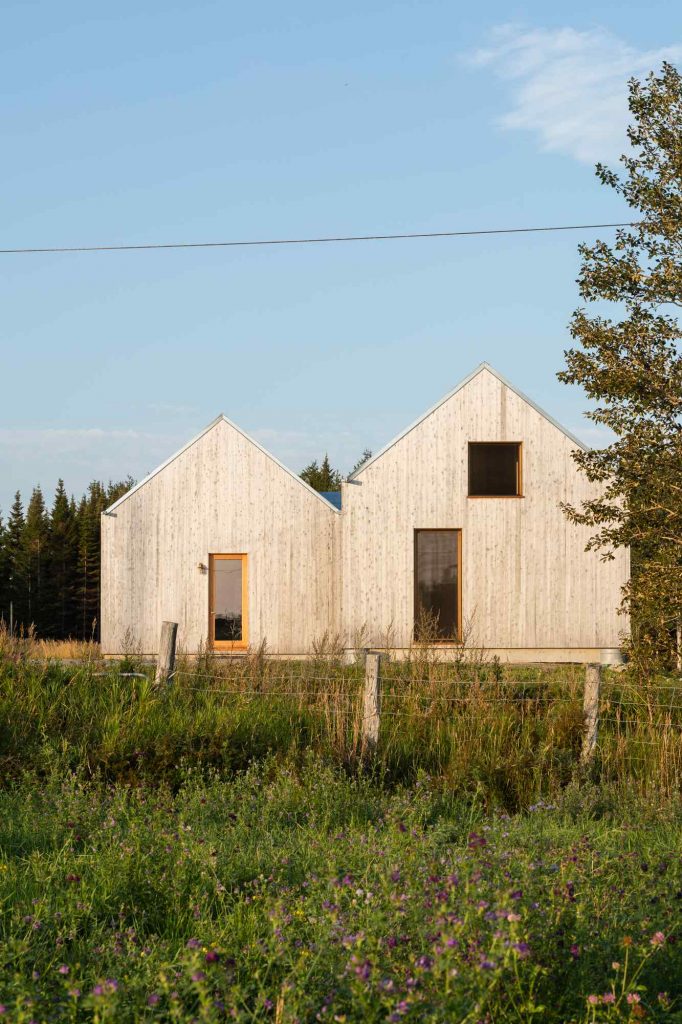
Photography: Maxime Brouillet
Photography: Maxime Brouillet
Beach house
This house design was an exercise in restraint, using natural materials, colors, and finishes: lightly stained vertical boards of white cedar were used on almost all walls, both inside and out, while the outdoor terrace is of mahogany and the interior floors are of black split-slate tile.
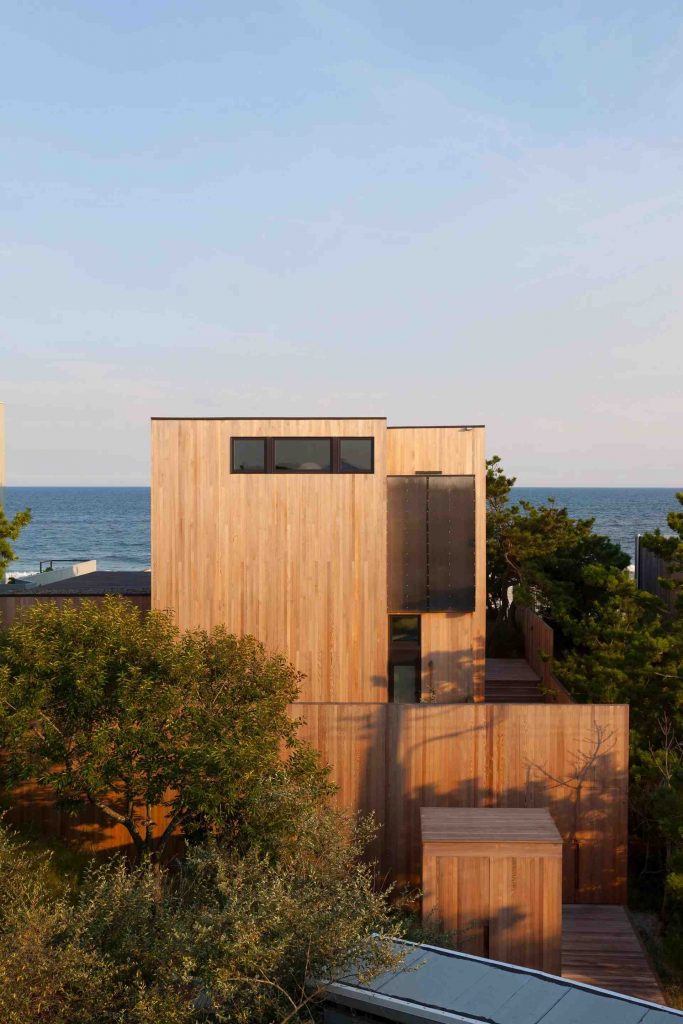
Photography: Marili Forastieri
Photography: Marili Forastieri
7. Archipelago house
The Archipelago House in Sweden is a unique home that blends the design cultures of Japan and Denmark with the famous Case Study Houses in California. The house features specially designed custom pieces and is constructed using wood, which is typical of many Swedish homes. The different volumes of the house are connected by wood decks and stairs, providing a warm contrast with the rocky coastal landscape while also making for cozy interiors.
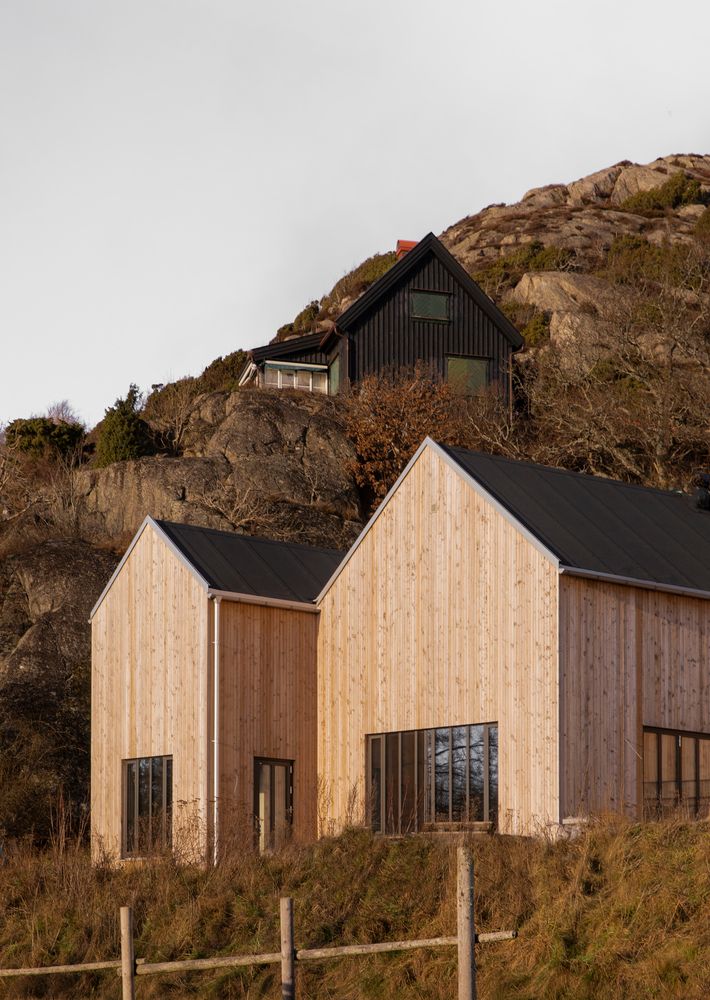
Photography: Jonas Bjerre-Poulsen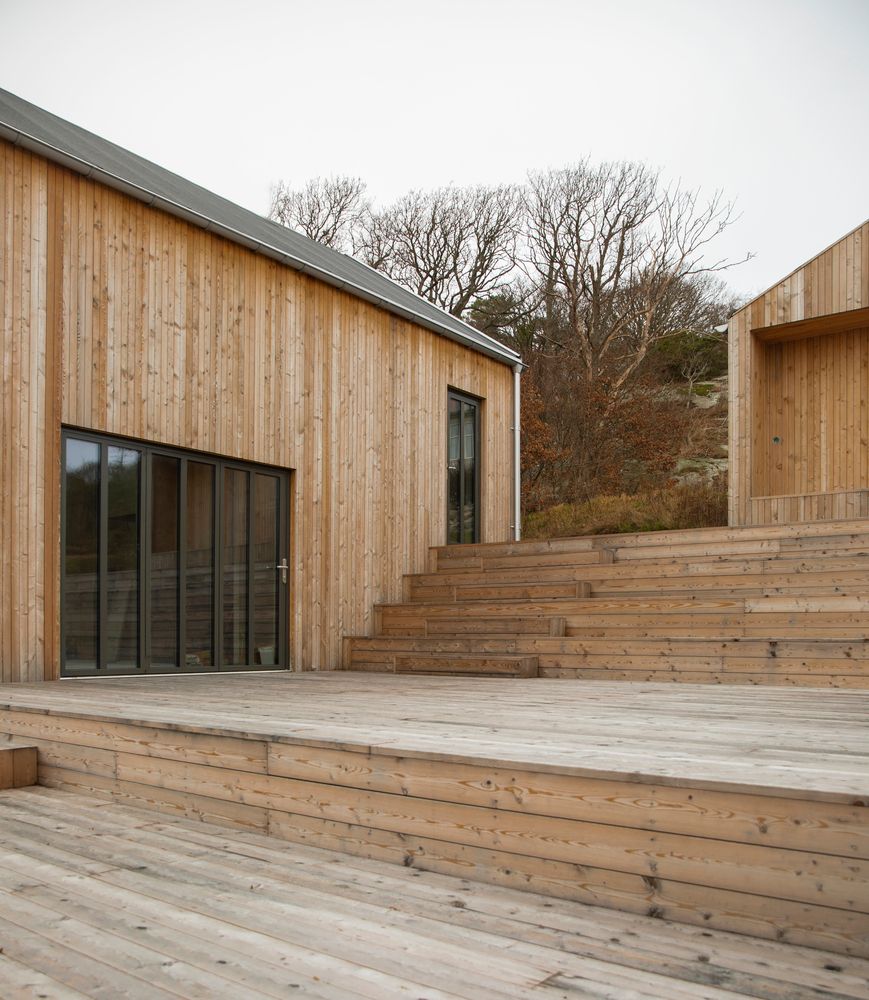
Photography: Jonas Bjerre-Poulsen



